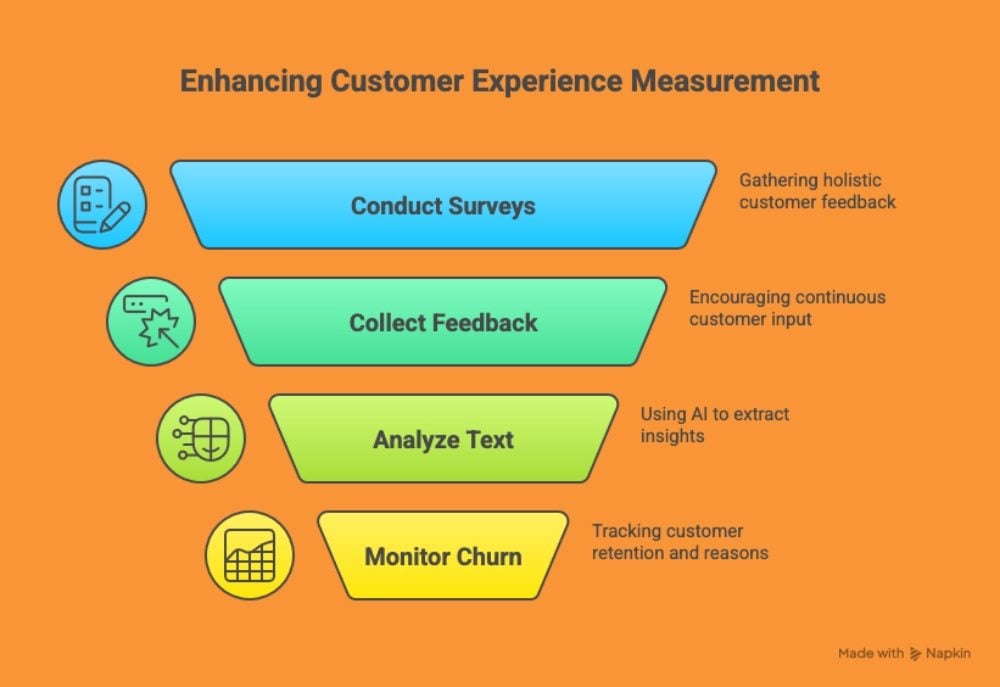The Gist
- Customer experience defines success. Every touchpoint — from awareness to advocacy — shapes how customers perceive and remain loyal to a brand.
- Customer experience management (CXM) elevates every interaction. Through data, strategy and feedback, CXM ensures consistency and satisfaction across the journey.
- AI transforms experience at scale. Intelligent automation, sentiment analysis and predictive insights enable personalization and proactive support.
- Human empathy remains the differentiator. Even with advanced technology, emotional connection, ethics and employee experience drive trust and advocacy.
- Measurement is the key to momentum. Holistic metrics like CSAT, NPS and churn analysis reveal not just performance — but opportunities to deepen relationships.
Customer experience, often referred to as CX, shapes the way companies interact with customers, build lasting impressions and drive loyalty.
Let’s break down the intricate layers of CX and uncover its role in dictating success.
Table of Contents
- Key FAQs Around Customer Experience (CX)
- What Is Customer Experience (CX)?
- What Is Customer Experience Management?
- What Is the Customer Journey?
- What’s the Difference Between Customer Experience and Customer Service?
- Why Is Customer Experience Important?
- The Role of AI in Modern CX
- How Do You Measure Customer Experience?
- 5 Ways to Improve Your Customer Experience
- 3 Poor Customer Experience Examples
- 3 Excellent Customer Experience Examples
- Videos Demonstrating the Best Customer Experience
- Customer Experience Management Tools
- Future Outlook for Customer Experience
Key FAQs Around Customer Experience (CX)
What's driving the best customer experience? Here are some key questions to consider in 2025 around customer experience.
Self-service help content is often the first line of support. If it's outdated or hard to find, trust erodes quickly—so accuracy, relevance and accessibility are essential. Start by aligning teams and breaking down silos. Map the customer journey, listen to feedback, invest in employee training and leverage data for ongoing improvement. Cross-functional collaboration is essential. Organizations use metrics like customer satisfaction score (CSAT), net promoter score (NPS), customer effort score (CES) and customer lifetime value (CLV) to assess loyalty, satisfaction and improvement opportunities. These KPIs help quantify the impact of CX on business outcomes. Common hurdles include siloed teams, outdated technology, lack of customer insight and inconsistent content. Overcoming these requires unified efforts and a customer-first mindset. Customer experience (CX) is the sum of all interactions a customer has with a company, spanning every touchpoint from first contact to post-purchase support. It reflects the customer's perception of the brand throughout the entire relationship lifecycle. This broad view goes beyond just product usability, encompassing emotions, behaviors and perceptions at every step. Customer service is a single touchpoint, usually when a customer seeks help. CX covers the entire journey, including product quality, website usability, marketing and brand reputation. While customer service is a critical part of CX, the overall experience is much broader. AI and automation enable personalization and faster support, but technology is most effective when balanced with human empathy. Integrated tech helps unify customer profiles and deliver seamless omnichannel experiences. Excellent CX drives loyalty, word-of-mouth and revenue growth, while poor experiences push customers toward competitors. According to experts, a seamless, emotionally positive journey at every touchpoint is the goal.
Now let's get more in-depth for customer experience best practices for chief customer officers, VPs of customer experience, contact center leaders and customer service and support leaders.
What Is Customer Experience (CX)?
Customer experience represents the complete customer journey, including every interaction from initial contact to beyond the final purchase. It includes the emotions, impressions and responses customers experience throughout these interactions. Within this definition are various types of customer experience, each defined by the nature of interaction, be it digital, in-person or via customer service channels.
The idea of customer experience recognizes that the entire experience of the customer contributes to the customer’s final evaluation of your company, not just immediate enjoyment of the product, said Colin Crowley, CX expert.
He pointed to the example of ordering a new pair of shoes: “It’s not just about having a nice pair of shoes, but the experience through which your customers journeyed to research the company, to order the shoes, to receive the shoes… and the customer service surrounding any questions about the shoes, to name just a few examples.”
What Is Customer Experience Management?
Customer experience management (CXM) is a strategic approach that focuses on creating customer experience that exceeds expectations. It involves optimizing each interaction between a customer and a brand in a way that enhances customer satisfaction, loyalty and advocacy.
Integral to this process is understanding the customer's journey and ensuring every touchpoint contributes positively to their perception. An important subset of CXM is consumer experience marketing, which focuses on tailoring marketing efforts to enhance the overall customer journey and experience.
Related Article: What Is Customer Experience Management (CXM)? Definition, Examples & Strategies
What Is the Customer Journey?
The customer journey maps the path a consumer takes with a brand, from initial awareness to the final stage of purchase and post-purchase interactions. It covers every touchpoint where a customer engages with a company, such as through word-of-mouth, email, reading reviews, social media posts and more.
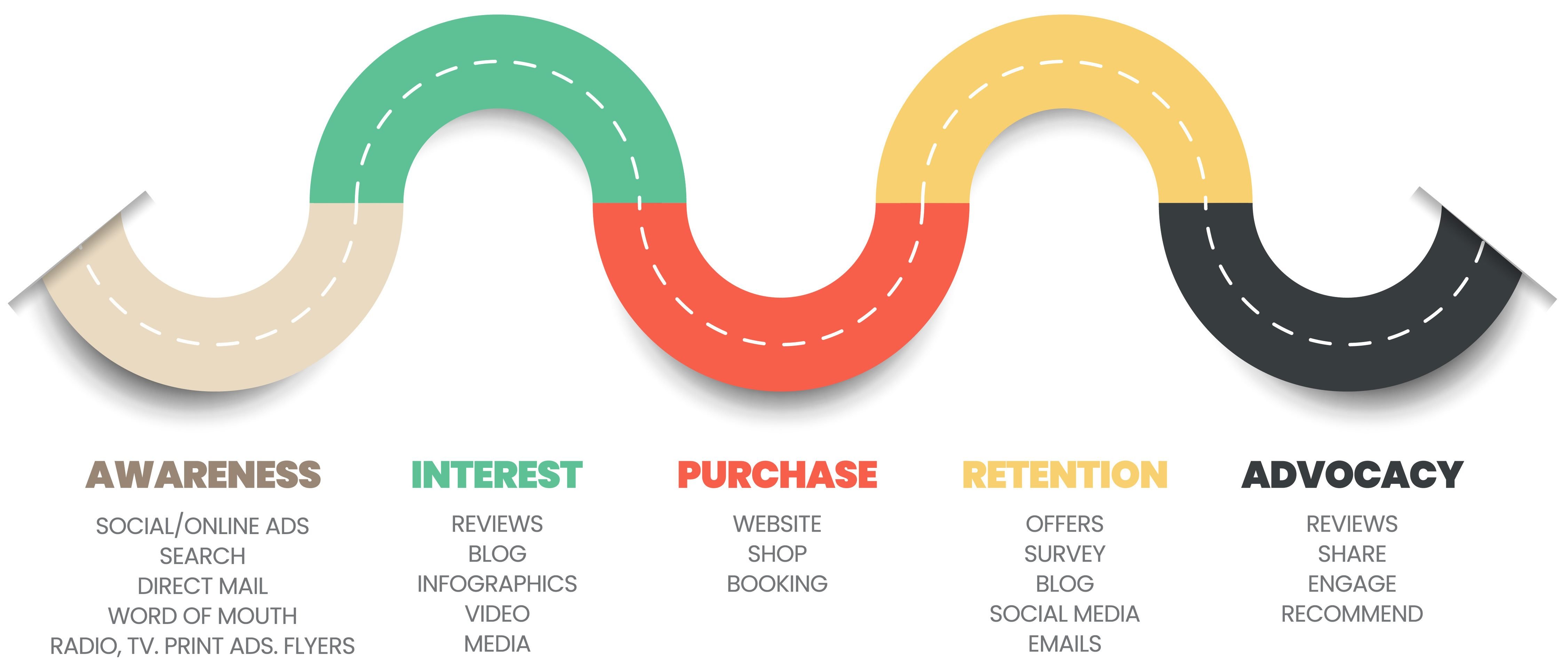
The customer journey breaks down into five stages:
- Awareness: The customer becomes aware of the product or service.
- Interest: The customer starts considering the product or service as a solution to their needs or problems.
- Purchase: The customer makes a purchase decision.
- Retention: Post-purchase, the focus shifts toward retaining the customer through excellent customer service, quality products and ongoing engagement.
- Advocacy: Satisfied customers become advocates for the brand, sharing their positive experiences with others.
Stages of the Customer Journey
This table outlines each stage of the customer journey and its purpose in shaping long-term customer relationships.
| Stage | Description |
|---|---|
| Awareness | Customer becomes aware of a product or service. |
| Interest | Customer evaluates whether the offering meets their needs. |
| Purchase | Customer decides to buy the product or service. |
| Retention | Brand maintains relationship and satisfaction post-purchase. |
| Advocacy | Customer shares positive experiences and recommends the brand. |
What’s the Difference Between Customer Experience and Customer Service?
Customer service is a single part of the broader customer experience, focusing on the support and assistance provided to customers. It tends to be reactive, coming into play when a customer faces an issue or needs help. In contrast, customer experience encompasses the entire customer journey, a proactive and comprehensive approach that includes every touchpoint and interaction a customer has with a brand.
Customer Service vs. Customer Experience
This table highlights the key differences between customer service and customer experience, showing how each contributes to overall brand success.
| Aspect | Customer Service | Customer Experience |
|---|---|---|
| Focus | Issue resolution and support | End-to-end customer journey |
| Approach | Reactive | Proactive and strategic |
| Scope | Single interaction | Multiple touchpoints |
| Goal | Resolve problems | Shape perception and loyalty |
Why Is Customer Experience Important?
Customer experience directly shapes brand perception, drives customer loyalty and influences purchasing decisions. A positive experience can lead to increased customer retention, referrals and a strong brand reputation, all essential for long-term success. In fact, research from Deloitte found that customer-centric companies are 60% more profitable than companies not focused on the customers.
In contrast, neglecting customer experience can result in lost customers and negative reviews, adversely affecting a company's growth and profitability. The importance of customer experience extends beyond immediate sales — it's a strategic asset that differentiates a brand and fosters sustainable growth.
Related Article: Seamless Omnichannel Strategy: Best Practices for Customer Engagement
The Role of AI in Modern CX
From generative AI chatbots to predictive analytics, artificial intelligence is now a cornerstone of customer experience strategy. Businesses are using AI to personalize interactions at scale, automate service, and predict churn before it happens.
AI has become more than just a CX enhancer—it’s now a core element that enables brands to deliver efficient, personalized, and highly scalable customer experiences. From real-time support to predictive insights, AI plays a pivotal role across the entire customer journey.
Proactive Personalization
AI-driven systems can anticipate customer needs based on behavior, preferences, and past interactions. For example, recommendation engines suggest products or content a customer is most likely to value, while predictive service tools flag potential issues before a customer even reaches out. This kind of personalization isn’t just convenient—it makes the customer feel seen and understood.
Intelligent Automation
Chatbots and virtual assistants, powered by natural language processing (NLP), now handle many front-line inquiries with speed and consistency. These tools reduce wait times, free up human agents for complex issues, and provide 24/7 support. AI is also automating backend workflows—like ticket categorization, sentiment tagging, and customer routing—resulting in smoother handoffs and faster resolutions.
Real-Time Analytics and Sentiment Detection
AI-powered sentiment analysis tools process customer feedback, social posts, and call transcripts to identify emotion and intent. This helps brands detect dissatisfaction early and course-correct in real time—enabling proactive customer care. By identifying common friction points, businesses can refine experiences at scale without waiting for lagging metrics such as churn or Net Promoter Score (NPS) to sound the alarm.
Human-AI Collaboration
The most forward-looking brands are blending human empathy with machine intelligence. For instance, AI tools can provide agents with real-time coaching, suggest next-best actions, or provide relevant knowledge base articles—making every human interaction faster and more informed.
Ethical Considerations and Bias Monitoring
As AI plays a greater role in CX, ethical deployment is critical. Businesses must ensure transparency in automated decisions, regularly audit models for bias, and give customers control over how their data is used. Trust is a key part of experience—and poorly implemented AI can erode it just as quickly as it can build it.
How Do You Measure Customer Experience?
To learn how to understand customer experience, you should begin with looking at effective ways of measurement. “Because customer experience is a holistic concept,” said Crowley, “the metrics to measure it should also be holistic and all-inclusive of all aspects of the customer experience.”
Look at the Whole Journey
You need to measure the different aspects of a customer’s experience, explained Crowley, and to do this, you need to demarcate all the different points at which your company touches the customer — website experience, ordering experience, delivery experience, etc.
“Each of these experiences can be evaluated in their own way and be owned by a cross-functional team of people at your company (think of a pod) consisting of key stakeholders across relevant teams,” he said.
Analyze Customer Survey Results
Two holistic measurements you can turn to are the customer satisfaction (CSAT) survey and the Net Promoter Score (NPS) survey, which do not evaluate one aspect of the customer’s journey, but the entire journey, said Crowley.
CSAT surveys, for instance, typically ask a customer to rate their satisfaction on a scale of 1 to 10, or by using a graphic scale with smiling, neutral and unhappy faces (like the one below). NPS scores, on the other hand, ask for a numerical score based on a single question, such as, “How likely are you to recommend the product?”
“These holistic metrics are helpful, especially to establish benchmarks with companies in similar verticals (which is where NPS helps, because there are well-publicized NPS benchmarks for certain industries), but you should also be sure to combine such holistic metrics with freeform response opportunities,” said Crowley.
Regularly Ask for Customer Feedback
Beyond CSAT and NPS surveys, Joe Miliziano, chief operating officer at Harri, recommended constant prompting for constructive feedback. Some ways his company asks for feedback include:
- Asking for in-product feedback
- Email campaigns
- Exit prompts when clients leave
Another way they ask for feedback? “In our Support Center, we’ve given the ability to actually post comments and vote other people's things up and down. I think that's always a very helpful thing, because you hear very loud clients, and sometimes, if you see ten people saying something's a good idea, it's probably a good idea,” said Miliziano.
Tap Into Text Analysis Tools
“Rather than just looking at a rating scale response,” added Crowley, “you can use AI-powered text analysis tools to dig deeper into what drove your customers’ responses.” These tools can uncover valuable insights hidden in unstructured data, such as reviews and social media comments.
This approach allows business to look at sentiments, preferences and pain points of customers, providing a roadmap for targeted improvements and personalized experiences. Beyond identifying areas for improvement, text analysis can also help companies foresee trends, adapt to changing customer needs and maintain a competitive edge.
Identify Rate of and Reasons for Churn
Another big measurement to keep an eye on, according to Miliziano, is retention. “In the business world, at the end of the day, are my clients staying with me? Or not?” Yes, he said, they might give a good NPS score, but are they staying in and are they continuing to buy more?
If customers are leaving, it’s essential to find out why. During exit surveys or interviews, ask departing customers directly why they chose to leave. Use engagement metrics like usage frequency, session time and future adoption rates to identify declining engagement, which often precedes churn. And comb through customer support interactions to look for signs of dissatisfaction or recurring issues that went unresolved.
Ultimately, said Crowley, “A combination of holistic metrics and granular metrics will combine to give you the best view of the customer experience, statistically speaking.”
Related Article: What Is the Net Promoter Score?
5 Ways to Improve Your Customer Experience
Why improve customer experience? Because great CX is key to building customer loyalty, increasing customer satisfaction and standing out in a competitive market. Let's look at some key strategies for crafting and optimizing CX:
1. Understand Who Your Customers Are
Understanding your customer base is one of the first steps in crafting a great customer experience. This process involves analyzing customer data, identifying different customer segments and recognizing their unique needs and preferences. Tailoring your approach to meet these specific customer segments ensures more relevant and impactful interactions.
2. Create an Emotional Connection
Developing an emotional connection with customers can transform the overall experience. In fact, according to a Forrester report, emotion is the most important driver behind customer experience. To tap into the emotional side of things, brands create stories, values and experiences that resonate with their target audiences on a personal level. When customers feel emotionally invested, they’re more likely to purchase from a brand (according to Iterable) and build lasting relationships.
3. Personalize Customer Interactions
Personalization is a powerful tool for creating memorable customer experiences. In fact, according to a Twilio Segment report, more than half of consumers polled said they’d become repeat buyers after a personalized experience.
To craft these experiences, brands can utilize data analytics to understand individual preferences and tailor interactions accordingly. From personalized emails to customized product recommendations, this approach makes customers feel valued and understood.
4. Act on Employee Experience
According to Miliziano, happy employees lead to customers who enjoy themselves more — especially in the hospitality industry. “Having people stay with your company for more than a minute is a big driver in my mind of what successful client experience ultimately is.”
The key, he claimed, is to look at the expectation you set for the employee and determine how to measure it. “How do I measure what they're telling me, number one, and then how do I marry that with their actions?” It’s important, he added, to determine their sentiment in a meaningful way so that you can cut through someone merely having a bad day or determine if there’s a real problem with employee engagement.
5. Create Seamless Omnichannel Experiences
Today’s shoppers have many avenues to interact with a brand — in-store, on the phone, online. Companies have to consider not just how employees interact with customers, but also mobile experience, usability and seamlessness between all channels.
No matter where a customer decides to interact with a brand, they expect consistency in service and quality to ultimately develop trust and consider the brand reliable.
3 Poor Customer Experience Examples
A positive customer experience is the ideal. Unfortunately, there are a lot of bad CX examples you can learn from, too.
1. The CVS Debacle
On a trip to local CVS, one of our very own journalists, Dom Nicastro, witnessed some poor customer experience in action. He saw a man in his 80s approach the pharmacy counter and ask for a COVID-19 vaccine. But the pharmacist rep turned him down, telling him he had to schedule an appointment online. The man asked, “What about people that don’t have a computer?” But still, the representative refused to help.
What was a lack of empathy or understanding on the part of the employee ended up being a bad look for the brand as well. Fortunately, Nicastro himself helped the man schedule an appointment online — but what about the other computer-less people who didn’t have a journalist around to help out?
2. A Flight to Nowhere
Last year, another CMSWire journalist, Michelle Hawley, had a staggeringly poor customer service experience myself. And it all took place in an airport. What started as an attempt to fly from Pennsylvania to Tennessee ended up with her spending nearly 12 hours in an airport and, ultimately, no flight.
Some delays are inevitable, right? True. But the bad experience boiled down to poor communication (getting boarded onto a plane, only to then deboard), poor customer service (a gate agent re-booking Hawley on a flight to Iowa, despite multiple attempts to tell her that’s not where she was headed) and being passed off from in-person customer service to phone customer service to an online form to try to get a refund for her trip, with each person saying they were unable to offer me any help.
3. United Breaks Guitars
Back in 2008, musician Dave Carroll took a United Airlines flight with his band from Halifax to Omaha. Upon landing and waiting to deplane, he looked out the window to see baggage handlers throwing their guitars around without regard. Carroll attempted to talk to a flight attendant about the issue, but she cut him off and told him to talk to another agent “outside.” Ultimately, Carrol’s instrument suffered $1,200 worth of damage.
After calls to customer service, emails and many months of waiting, Carroll’s request for the airline to cover the repairs to his guitar were rejected. So he decided to take to the internet with a song that ultimately went viral: “United Breaks Guitars.”
3 Excellent Customer Experience Examples
When it comes to CX, actions speak louder than strategies. These three real-world examples of excellent customer experience showcase how businesses can transform customer service into unforgettable acts of kindness.
1. The Starbucks Barista
One Starbucks barista went the extra mile to show a customer she cares. Krystal Payne, recognizing that a deaf customer at their Leesburg, Virginia, location struggled with ordering his drink, spent more than three hours studying American Sign Language (ASL) to help make the man’s experience seamless.
The customer, Ibby Piracha, was surprised one day when he arrived at Starbucks with a note from Payne explaining her efforts. Piracha, touched by the gesture, shared a picture of the note online — and even framed it. This example serves as a great reminder to brands that selfless gestures from frontline employees can have a significant impact on individuals’ lives and offer heartwarming brand stories that those online can read and enjoy.
2. The Disney Experience
One brand renowned for its excellent customer experience is Disney, and it does this through employing its Compass Model — an approach that looks at four different aspects of the customer experience:
- Needs: What the customer desires from the experience. Some needs are stated, but many are not.
- Wants: The underlying objective or purpose of customers — some stated, some unstated and some not even recognized by the customer.
- Stereotypes: The preconceived notions (both positive and negative) that customers have about the experience.
- Emotions: The emotions that customers have or are likely to experience.
The compass model has been so successful for Disney that many other brands (like airlines and hospitality companies) have decided to take it on.
3. Southwest on Twitter
Air travel can be a nightmare. There are long lines, crowded airports, delays, cramped seating. Yet one airline seems to know how to come out on top: Southwest. The airline is known for putting customer experience at the forefront, and it encourages its employees to build meaningful connections with its customers.
And customers, in turn, have taken to the internet to share their happy experiences. Southwest decided to highlight 175 of these positive tales in a campaign using the hashtag #175stories. Some highlights? A plane from Houston full of dozens of cats and dogs rescued from shelters during Hurricane Harvey. A man who won a vacation to Cancun. And a cabin crew who sang to a woman on her 80th birthday.
Related Article: The Customer Is Key: Top Customer Experience Mistakes
Videos Demonstrating the Best Customer Experience
Inside FedEx CX: Neil Gibson on Quality, Culture and Digital-First Service
Key Customer Experience Takeaways
- Legacy in focus. FedEx CX leader Neil Gibson reflects on founder Fred Smith’s vision and how it continues to shape customer experience.
- Culture of quality. From military lessons to QDM’s six guiding principles, Gibson explains how FedEx operationalizes “1% better every day.”
- Digital-first mindset. With thousands of daily interactions, Gibson underscores the push for personalized, digital-first experiences over 800-number frustration.
How Cox Automotive Ties Employee Experience to Customer Wins
Key Customer Experience Takeaways
- Pinning down purpose. Mandi Fang’s team uses small symbols—like an onboarding pin—to embed a big cultural mission across 2,000 employees.
- Frontline-first innovation. Cox Automotive’s Five-Star program turns contact center insights into company-wide action through ride-alongs and AI analytics.
- Where EX meets CX. From recognition programs to KPI wins, Fang shows how empowering employees directly improves customer satisfaction and efficiency.
The UPS Store’s CX Secret: Serve Two Customers, Not One
Key Customer Experience Takeaways
- Two customers, one standard: The UPS Store treats franchisees and end customers as core customers — because the customer’s experience will never exceed the franchisee’s experience.
- Phygital done right: Returns and services that start online and finish in-store are designed to feel “seamless,” from consolidated returns to mailbox, printing, and shipping for microbusinesses.
- Listen → Align → Act: Relationship/competitive NPS, call categorization, verbatims, and focus groups feed fast operational changes — often rolled into quarterly store visits and trainings.
- Recovery builds loyalty: Issues happen; rapid, transparent recovery (and guarantees like pack-and-ship) turn negatives into memorable, loyalty-building moments.
- Culture as CX engine: A company-wide “high say-to-do ratio” sets expectations for promises kept — to customers, franchisees, and teams.
Customer Experience Management Tools
Customer experience ecosystem tools and usage
This table shows which tools and applications organizations currently use or plan to use within their customer experience ecosystem, based on the CMSWire/SMG State of the Digital Customer Experience Report 2025.
| Question | We use this | We plan to use this in next 2 years | No plans to use this |
|---|---|---|---|
| Customer Relationship Management (CRM) system | 65% | 28% | 7% |
| Email marketing tool | 63% | 27% | 10% |
| Ecommerce | 58% | 28% | 14% |
| Content Management System (CMS) | 58% | 34% | 8% |
| Social media analytics | 57% | 30% | 13% |
| Social media management platform | 55% | 33% | 12% |
| Data management/data visualization | 55% | 33% | 12% |
| Customer Experience Management (CXM) software | 53% | 34% | 13% |
| Content analytics | 53% | 36% | 11% |
| Content workflow and approval platform | 52% | 34% | 14% |
| Digital asset management (DAM) | 52% | 34% | 14% |
| Chatbots | 51% | 33% | 16% |
| Marketing automation software | 50% | 36% | 14% |
| Call center software/knowledge base | 50% | 34% | 16% |
| Customer Data Platform (CDP) | 49% | 35% | 15% |
| Voice of the Customer/Surveying platforms | 49% | 33% | 19% |
| Digital Experience Platform (DXP) | 49% | 35% | 16% |
| Event management software | 47% | 32% | 21% |
| Product Information Management (PIM) | 46% | 37% | 16% |
| SEO platform | 45% | 38% | 17% |
| Customer community platform | 43% | 37% | 20% |
| Brand portal | 43% | 36% | 21% |
| Formal UI/UX design system & library | 41% | 40% | 19% |
| Sentiment analysis | 39% | 38% | 22% |
| Account-Based Marketing platform (ABM) | 39% | 40% | 21% |
| Livestream/web broadcast platform | 38% | 39% | 24% |
| AR/VR | 34% | 40% | 26% |
| Journey orchestration software | 34% | 39% | 28% |
| Other | 19% | 24% | 57% |
These tools form the backbone of modern CX stacks, helping businesses manage content, capture insights, personalize interactions and maintain continuity across touchpoints. Let’s take a deeper dive into today’s available customer experience management tools.
1. Adobe Experience Manager
Adobe Experience Manager (AEM), part of Adobe’s Digital Experience Cloud, is a content management solution for building websites, mobile apps and forms. AEM provides tools for creating, managing and optimizing digital customer experiences across all channels, including web, mobile, email and social media.
This tool can help brands manage their marketing content and assets more efficiently, with its strengths lying in its ability to deliver personalized experiences to customers, robust scalability and integration with other Adobe products.
2. Zendesk
Zendesk is a customer service software and customer relationship management system. It’s known for its comprehensive helpdesk capabilities and user-friendly interface. This customer experience tool can integrate with other various business operations, offering features like ticketing systems, live chat, automated workflows and a centralized knowledge base.
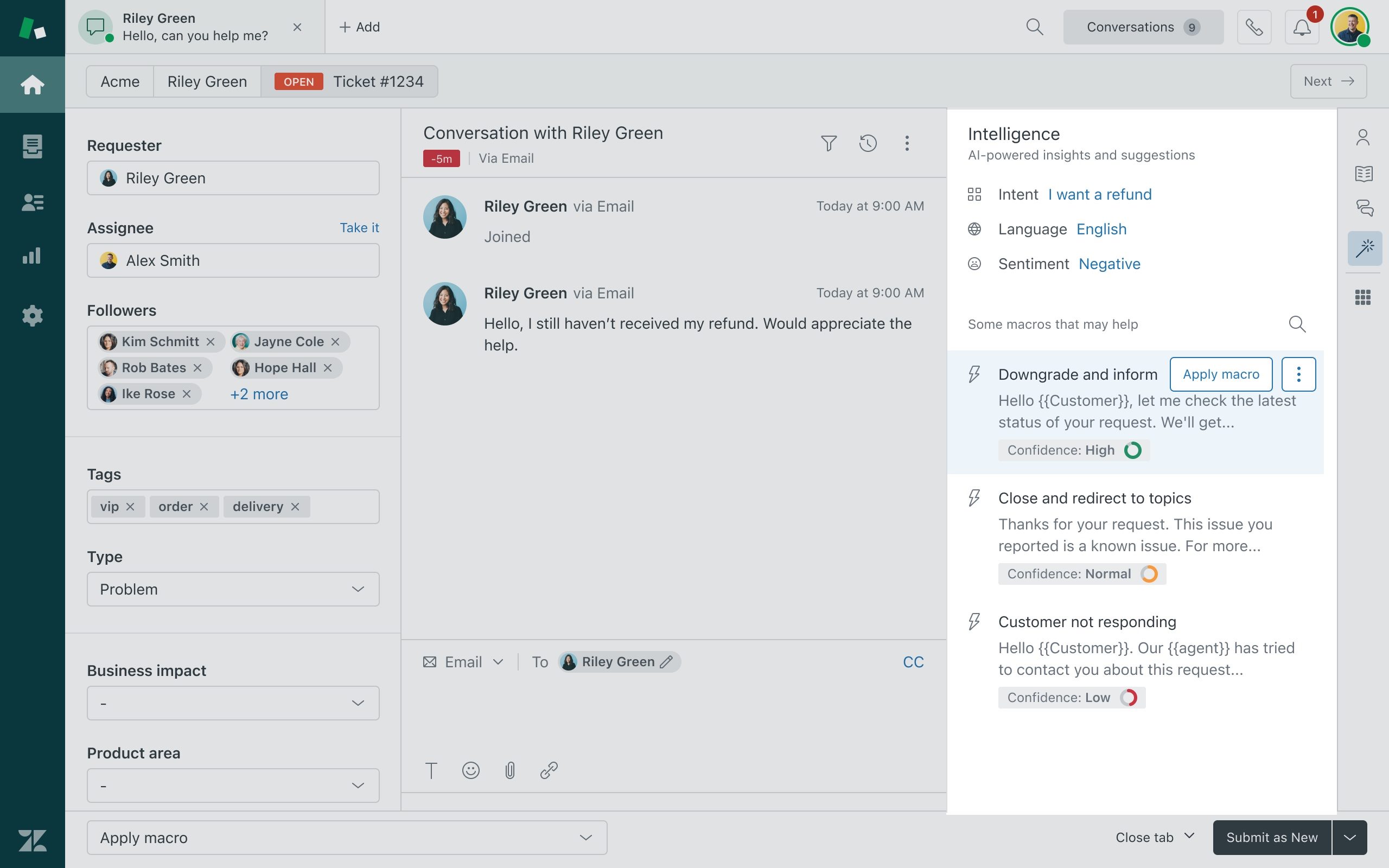
Zendesk offers analytics and reporting tools that allow businesses to track customer interactions, identify trends and continually improve service quality. It’s also flexible in its scalability, meaning it’s a popular choice for businesses of all sizes.
3. Zoho
Zoho is a customer experience platform that offers a number of applications designed to streamline business processes and enhance customer interactions. Known for its CRM solutions, this platform integrates sales, marketing, customer support and inventory management functionalities, providing a unified approach to managing customer relationships.
Zoho is equipped with tools for analytics, campaign management, social media integration and automation, allowing businesses to deliver personalized customer experiences efficiently. It also boasts flexibility and scalability, making it suitable for businesses of varying sizes and industries.
4. Medallia
Medallia is a customer experience management platform designed to capture feedback across multiple touchpoints, analyze it in real-time and deliver actionable insights. Its capabilities allow it to understand customer sentiment, behavior and needs through advanced analytics and artificial intelligence.
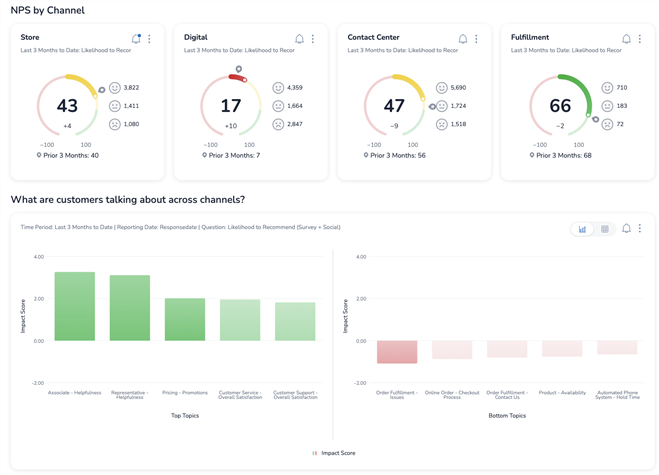
Medallia’s suite of tools include survey creation, text analytics, social listening and experience management across digital channels, making it a comprehensive solution for companies looking to improve customer satisfaction and loyalty.
5. Tealeaf
Tealeaf is a customer experience analytics solution that provides insights into user interactions on websites and mobile applications. It specializes in capturing, analyzing and replaying customer sessions to help businesses understand the customer's online behavior and experience.
This platform’s analytics capabilities include anomaly detection, struggle analysis and journey analytics, allowing organizations to identify pain points, optimize user interfaces and improve conversion rates. It’s also useful for detecting and resolving issues that affect customer experience, such as usability flaws or technical glitches.
6. Qualtrics XM
Qualtrics is a customer experience management software that allows organizations to capture and analyze customer feedback across multiple channels. It’s also known for its robust research and survey capabilities, providing deep insights into customer preferences, behaviors and sentiments.
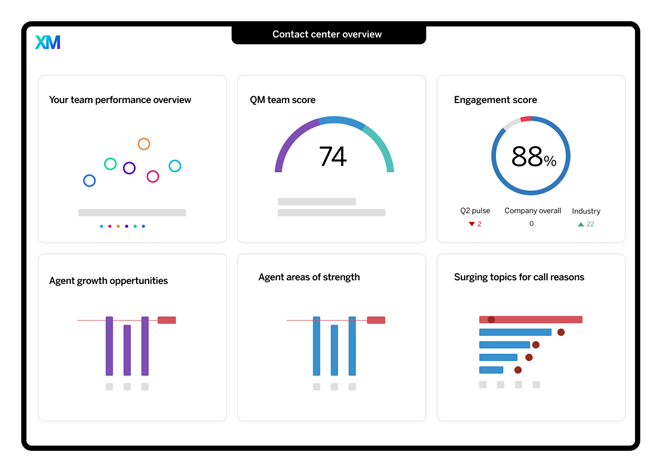
This platform combines data analytics with a user-friendly interface, allowing businesses to conduct complex research, track customer journey analytics and identify key drivers of customer satisfaction and loyalty. It also offers features like survey design, targeting and data visualization.
7. Salesforce
Salesforce is a well-known customer relationship management platform that offers a suite of solutions to enhance CX. At its core, Salesforce provides an integrated platform that allows businesses to connect with customers in a more personalized and efficient way across various channels.
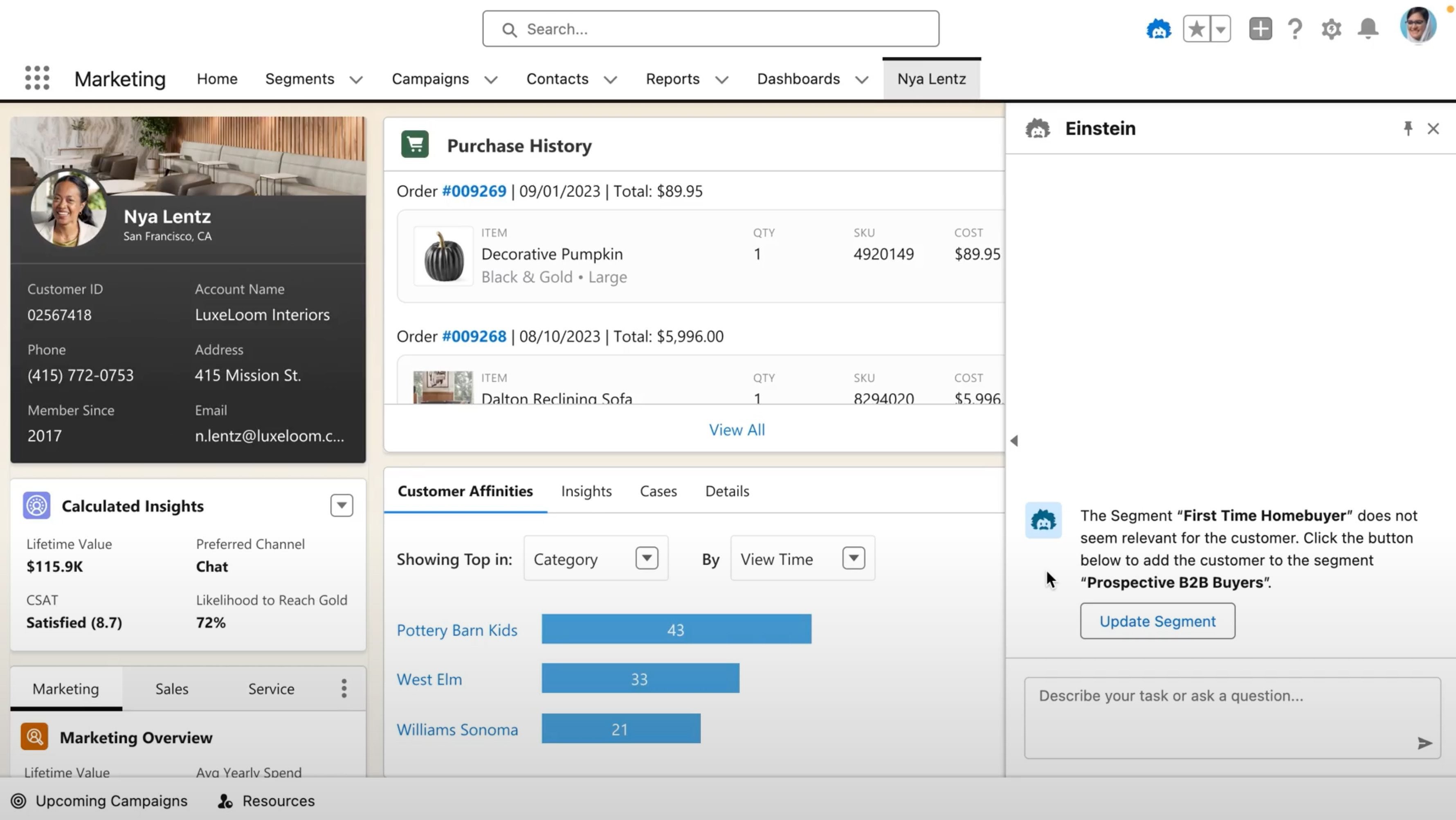
This platform combines sales, service, marketing and analytics tools, allowing companies to gain a 360-degree view of their customers. It also has the ability to automate complex business processes, deliver powerful data insights and customize solutions to fit specific business needs.
8. HubSpot
HubSpot is a holistic customer experience platform that specializes in inbound marketing, sales and service software. It offers tools designed to attract, engage and delight customers throughout the entire journey.
This platform’s strength lies in its ability to integrate CRM, email marketing, social media management, content management and customer service functionalities into one solution, providing businesses with a comprehensive view of their customer interactions and data. The platform also excels in automating and streamlining marketing campaigns, managing sales pipelines and offering exceptional customer support.
Related Article: 10 Voice of the Customer Tools to Maximize Customer Experience
9. Sprinklr
Sprinklr is a unified customer experience management platform that combines social media management, customer care, and insights analytics. It is designed to listen, engage, and respond to customers across a myriad of digital channels, offering real-time data and sentiment analysis that help businesses optimize their messaging and customer support strategies.
Sprinklr is particularly valuable for large enterprises managing high volumes of social interactions and customer feedback.
10. Adobe Journey Optimizer
Adobe Journey Optimizer is part of the Adobe Experience Platform and helps businesses deliver personalized, omnichannel customer journeys in real time. It uses data and AI to determine the best content and timing for each customer interaction, based on behavior, preferences, and lifecycle stage.
This orchestration tool stands out for its ability to unify customer data across touchpoints and deliver highly contextual experiences through automation, making it a key player in the shift toward experience-led CX strategies.
11. NiCE
NiCE is a leader in customer experience and contact center technology, known for its AI-powered platform that helps enterprises deliver consistent, high-quality service at scale. Its flagship platform, CXone, brings together omnichannel routing, workforce engagement, analytics, and automation capabilities in a unified cloud solution.
NiCE differentiates itself through innovations like AI Ops Center and CXone Mpower, which leverage AI to boost agent performance, prevent service disruptions, and ensure reliable, scalable experiences across digital and voice channels. The platform is especially valued by large enterprises for its end-to-end automation and real-time analytics capabilities.
12. Five9
Five9 is a leading cloud contact center platform designed to enhance customer engagement and agent productivity through intelligent automation and AI. It integrates omnichannel communication tools — including voice, chat, email, SMS, and social — within a single, cloud-native environment.
The platform’s Intelligent CX Platform combines AI-driven insights, predictive analytics, and real-time performance monitoring to help organizations deliver faster, more personalized service. Five9’s flexibility, reliability, and scalability make it a popular choice for enterprises seeking a modern alternative to legacy contact center systems — with a strong focus on cloud resilience and agent empowerment.
Future Outlook for Customer Experience
Crowley said he expects a few areas within customer experience to grow and continue to evolve in the coming years — such as AI-based technology and personalization. “There will undoubtedly be increasing personalization in customer experiences, as AI allows more and more customers to be treated like individuals at scale,” he explained.
He also added that the importance of holistic customer experience will continue to be represented in organizational changes, where companies increasingly recognize that, to provide great CX, all the people who impact different aspects of the journey should be united under one vertical to prevent slow downs in communication and siloed thinking.
“We see this trend evidenced in customer support (and even customer marketing), organizations growing their organizational mandates into areas previously isolated from them, such as social media, online communities, and voice of the customer programs,” he said.

